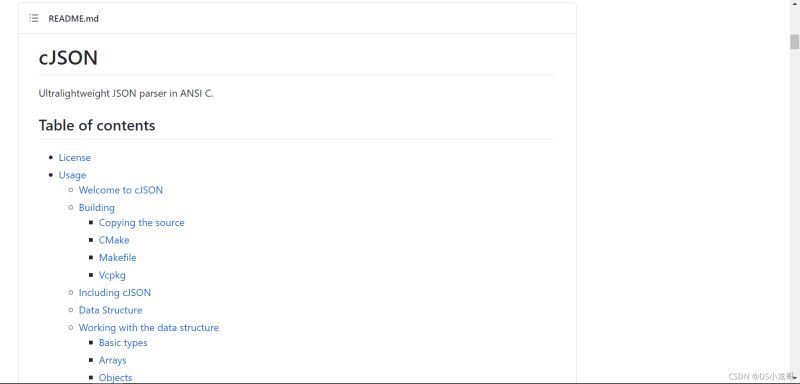原文链接:http://www.cnblogs.com/yewei/archive/2013/02/22/2922949.html有多少个new就有多少个delete 二维动态数组的写法 首先开辟第一维的空间,第一维是char型的指针char **s = new char*[182];在第一维的...
 原文链接:http://www.cnblogs.com/yewei/archive/2013/02/22/2922949.html
原文链接:http://www.cnblogs.com/yewei/archive/2013/02/22/2922949.html
有多少个new就有多少个delete
二维动态数组的写法
- 首先开辟第一维的空间,第一维是char型的指针
char **s = new char*[182];
- 在第一维的基础上,开辟第二维的空间,第二维是不定长度的char型
s[nCounts] = new char[str.length()];
- 释放二维动态数组时,规则是由内到外的,先释放第二维的空间,最后再释放第一维的空间
for (int i = 0; i < nCounts; ++i) {
delete[] s[i]; // delete[col] s[i];
s[i] = NULL;
}
delete[] s; // delete[row] s;
s = NULL;
s是二维指针,(声明)定义在main函数内,既然定义时在函数内,那么s指针就存放在内存中的栈区域中,使用new动态开辟的空间是在堆区域,堆区域用于存放数据,当然,每个数据都有它的内存地址,因此数据的地址是堆中的某一块地址,而栈中的s只是一个指针,这个指针指向堆区域的指定一块地址,当使用delete释放第二维的空间时,实质是回收堆上的虚拟地址块,而栈内的指针s并无发生变化
实现代码:
1 ///: handleString
2 #include <cstdlib>
3 #include <string>
4 #include <vector>
5 #include <fstream>
6 #include <iostream>
7 #include <algorithm>
8
9 using namespace std;
10
11 int
12 main(void) {
13 ifstream fin("E:\\totaldata.txt");
14 ofstream fout("E:\\result.txt");
15
16 char **s = new char*[182];
17
18 int nCounts = 0;
19 string str;
20 vector<string> vect;
21 vector<string>::const_iterator iter;
22
23 while (getline(fin, str, '\n')) {
24 remove(str.begin(), str.end(), ' ');
25 int pos = str.find('>');
26 str.erase(str.begin(), str.begin() + pos + 1);
27
28 vect.push_back(str);
29
30 s[nCounts] = new char[str.length()];
31 strncpy(s[nCounts], str.c_str(), str.length());
32 fout << nCounts + 1 << " " << s[nCounts++] << endl << endl;
33 // char* s = new char[str.length()];
34 // strcpy(s, str.c_str());
35 // fout << nCounts++ << " " << s << endl << endl;
36
37 // delete [] s;
38 }// End of While
39 for (int i = 0; i < nCounts; ++i) {
40 // // int col = strlen(s[i]);
41 // // delete[] s;
42 delete[] s[i];
43 }
44 delete[] s;
45
46 fin.close();
47 fout.close();
48 return 0;
49 }
一开始使用strcpy,但是出错了,原因是没有在s[nCounts]末尾加上’\0’!
如果已经知道第一维的长度,假设是182,那么可以参考这种写法
- 定义
char *s[182] = {NULL};
- 动态开辟第二维数组空间
s[nCounts] = new char[str.length()];
- 释放动态数组时,因为第一维已经是事先设定好的,实质上使用new申请的堆空间只有第二维,因此只需要释放第二维的堆空间
for (int i = 0; i < nCounts; ++i) {
delete[] s[i];
}
S是在main函数中定义的,因此指针数组s存放在栈空间中,栈空间存放的是182个char类型的指针,使用new为第二维开辟的空间是在堆区域,栈空间是不能回收的,因为栈是后进先出的,而且栈内保存的不只是变量,还有调用函数的地址(EIP)等等,而堆是需要回收的,如果使用new开辟一块空间,除非是使用delete回收或直到程序运行结束,否则是永远不会自动回收的,因此只能对第二维使用delete来回收堆空间
实现的代码如下:
1 ///: handleString
2 #include <cstdlib>
3 #include <string>
4 #include <vector>
5 #include <fstream>
6 #include <iostream>
7 #include <algorithm>
8
9 using namespace std;
10
11 int
12 main(void) {
13 ifstream fin("E:\\totaldata.txt");
14 ofstream fout("E:\\result.txt");
15
16 char *s[182] = {NULL};
17
18 int nCounts = 0;
19 string str;
20 vector<string> vect;
21 vector<string>::const_iterator iter;
22
23 while (getline(fin, str, '\n')) {
24 remove(str.begin(), str.end(), ' ');
25 int pos = str.find('>');
26 str.erase(str.begin(), str.begin() + pos + 1);
27
28 vect.push_back(str);
29 str += '\0';
30
31 s[nCounts] = new char[str.length()];
32 strcpy(s[nCounts], str.c_str());
33 fout << nCounts + 1 << " " << s[nCounts++] << endl << endl;
34 // char* s = new char[str.length()];
35 // strcpy(s, str.c_str());
36 // fout << nCounts++ << " " << s << endl << endl;
37
38 // delete [] s;
39 }// End of While
40 for (int i = 0; i < nCounts; ++i) {
41 // // // int col = strlen(s[i]);
42 // // // delete[] s;
43 // int slen = strlen(s[i]);
44 // cout << &s[i] << " " << (s + i) << endl;
45 // delete[] s[i];
46 char** ptr = (s + i);
47 cout << &s[i] << " " << ptr << endl;
48 delete[] ptr;
49 // delete[] (s + i * (strlen(s[i]) + 1));
50 }
51 // delete[] s;
52
53 fin.close();
54 fout.close();
55 return 0;
56 }
转载于:https://www.cnblogs.com/yewei/archive/2013/02/22/2922949.html
本文标题为:谈谈 C++ 内存管理


基础教程推荐
- C语言 详解字符串基础 2023-03-27
- [C语言]二叉搜索树 2023-09-07
- 带你深度走入C语言取整以及4种函数 2022-09-17
- 全面了解C语言 static 关键字 2023-03-26
- C++实战之二进制数据处理与封装 2023-05-29
- centos 7 vscode cmake 编译c++工程 2023-09-17
- C语言实现宾馆管理系统课程设计 2023-03-13
- C语言编程C++旋转字符操作串示例详解 2022-11-20
- C++实现ETW进行进程变动监控详解 2023-05-15
- [c语言-函数]不定量参数 2023-09-08

















